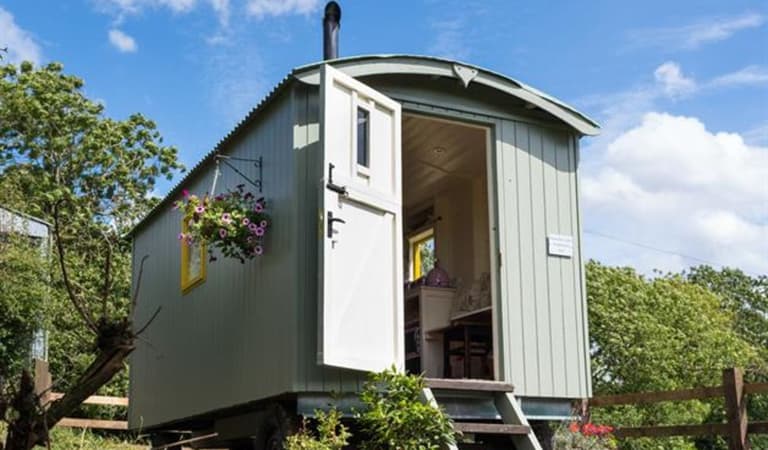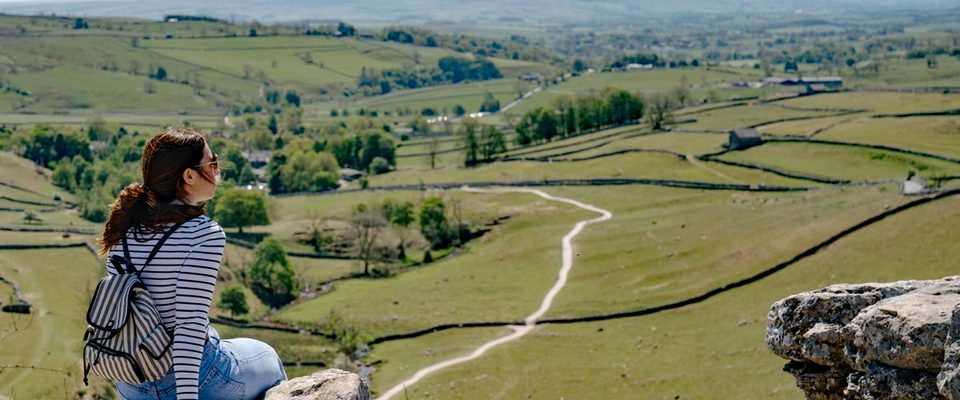- Index
- Rosedale Mineral Railway Easy Access Walk
Rosedale Mineral Railway Easy Access Walk
Choose a clear day and the panoramic views of Rosedale will reward your efforts on this glorious 1-mile route.
About Rosedale Mineral Railway Easy Access Walk
Choose a clear day and the panoramic views of Rosedale will reward your efforts on this glorious 1-mile route. As an introduction to the wide sweep of heather moorland you’ll be hard pressed to find a better spot than the moors above Rosedale. The track you follow also forms part of the valley’s industrial heritage – it’s the old railway line for Rosedale’s nineteenth-century ironstone mines.
Great for: easy access, big-sky views, history buffs
Length:1¼ miles (2km) Time: 1 hour Start/Finish: Chimney Bank car park, Rosedale Abbey Grid Ref: SE 722 948 OS Map: Ordnance Survey OL26
Refreshments: Rosedale Abbey Toilets: Rosedale Abbey
About this walk
The path has a hard, compacted surface and is fairly level throughout. It's a linear route and is a just over a mile in total (ie, there and back). The route starts from the small, lower car park, by the side of the road, almost at the top of Chimney Bank. From the car park the path ascends (very gradually) past some disused ironstone kilns to reach a disused railway line. It then follows the old line along a cinder track to a fantastic viewpoint and seat. It is also possible to continue following the old railway line beyond the seat.
Dogs: Please note, you must keep your dog on a lead on the old railway track.
A thriving industry
For 70 years, the peace and tranquillity of Rosedale was shattered by a booming ironstone industry. It's hard to believe today but in the 19th century the area was part of industrial Yorkshire, with mines, kilns and even a moorland railway. In fact, when the mines opened, the population of the dale shot up from 558 people to 2,389 in a mere 20 years.
Relics of the past
On this route you'll pass lots of evidence of the old ironstone industry. Perhaps the most striking relics are the roasting kilns close to the car park. Huge quantities of ore were tipped into the kilns from the railway line above them. The ore was mixed with coal and set alight. The process was known as calcination and the idea was to purify the iron, and reduce its weight, before it was carried by railway over the moors, initially to County Durham and later to Middlesbrough. You'll also pass a row of terraced cottages that was built to house workers on the railway line.
Did you know? The seat at the end of this route was inspired by the area's ironstone mining heritage. Local sculptor Vivien Mousdell worked with the local community to come up with the words and images for this unique seat.
Nearby businesses
Rosedale Abbey Caravan & Camping
Gloriously situated in the heart of the North York Moors National Park and… Gloriously situated in the heart of the North York Moors National Park and only seven miles from Pickering, with all its attractions.
Holidaycottages.co.uk - North York Moors
A fine selection of hand-picked, personally inspected properties all… A fine selection of hand-picked, personally inspected properties all located in excellent positions along the Yorkshire Coast.
Rosedale Light Shepherds Hut
Sit on the steps and enjoy the peace, gaze down the stunning Rosedale… Sit on the steps and enjoy the peace, gaze down the stunning Rosedale valley or view the amazing stars later on.
Cropton Cabins - Forest Holidays
Forest Holidays allow you to discover yourselves again. Away from the… Forest Holidays allow you to discover yourselves again. Away from the bustle of everyday life you can relax in unique woodland surroundings. You can…







